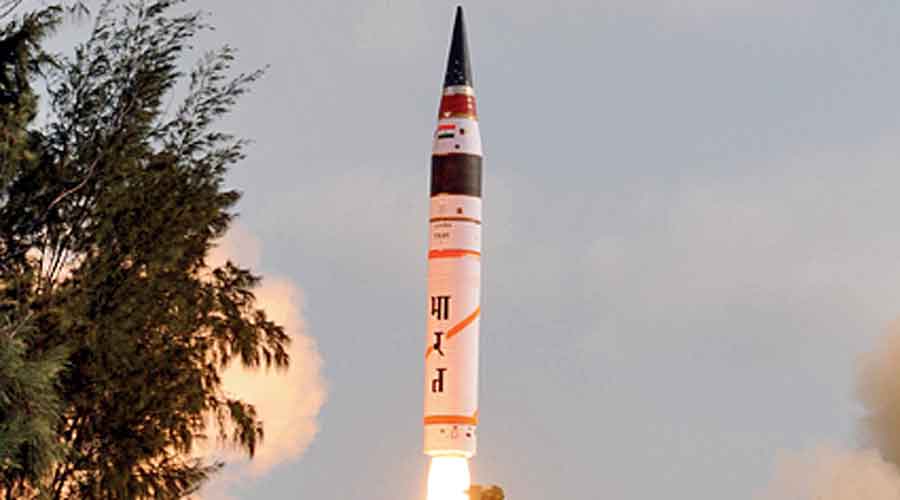New Delhi has been following the Credible Minimum Deterrence doctrine for a while. India’s nuclear policy is primarily based on ‘No First Use, Second Strike Capability’. However, considering Beijing’s changing, aggressive posture, there is a need to reassess not only India’s nuclear policy but also the threat perception from our adversaries.
New Delhi perceives its nuclear triad as a means of deterrence. But Beijing’s modernization and enhancement of nuclear capabilities are in full swing. If Beijing were to employ a tactic of intimidation, New Delhi would have to step back. This is because India’s present stockpile of nuclear weapons is not enough to strategically deter Beijing. Therefore, to counter Beijing effectively, some re-configurations are necessary in India’s nuclear policy.
Beijing is the only credible nuclear threat that New Delhi faces. Islamabad’s nuclear policy may be New Delhi-centric and non-compliant to the NFU principle but New Delhi can withstand and absorb a tactical nuclear launch by Pakistan in the event of a war. India’s nuclear retaliation would pulverize Pakistan. Islamabad’s security establishment is aware of the futility of engaging in a nuclear conflict with New Delhi. Beijing’s arming of Islamabad is unlikely to turn Pakistan into a ‘credible nuclear threat’. So India must set aside its Islamabad-fixation and look at Beijing as the greater future adversary.
What this means is making India’s nuclear policy Beijing-centric. This would involve the practice of maximum deterrence — increasing nuclear weapons and technologies for effective deterrence against Beijing. Some experts also suggest that using Atomic Demolition Munitions — small, nuclear land mines planted in enemy forward positions — can increase the scope of such deterrence. New Delhi should also increase nuclear cooperation and engage in building military cooperation with nations around China’s periphery (Vietnam and Southeast Asian nations). This can be an effective tit-for-tat move by New Delhi against Beijing arming Islamabad. Extending nuclear cooperation to the Philippines is, thus, a step in the right direction.
The Union defence minister, Rajnath Singh, has made cryptic remarks over India’s NFU policy. The former Union defence minister, Manohar Parrikar, had expressed reservations over it. India’s affirmation of its commitment towards the NFU doctrine on one hand while maximizing its deterrence capabilities keeping Beijing as the principal threat may lead to ambiguity. But the ambiguity can give New Delhi a strategic advantage over China, keeping Beijing guessing.
The Strategic Forces Command, which is responsible for nuclear stockpiling and the execution of nuclear-related activities, must revisit India’s nuclear policy to make it more robust. The acquisition of S-400 missiles from Russia, upgrading the Agni ballistic missile programme as well as arming the Indian air force with nuclear warheads are a few noticeable signs of New Delhi taking steps in nuclear development and deterrence against Beijing. However, what is needed is a far more proactive approach to counter Beijing’s aggression in the military and the nuclear domains. All of this would depend on how the situation evolves, assessments on the border, and the behaviour of adversaries, especially that of Beijing.











